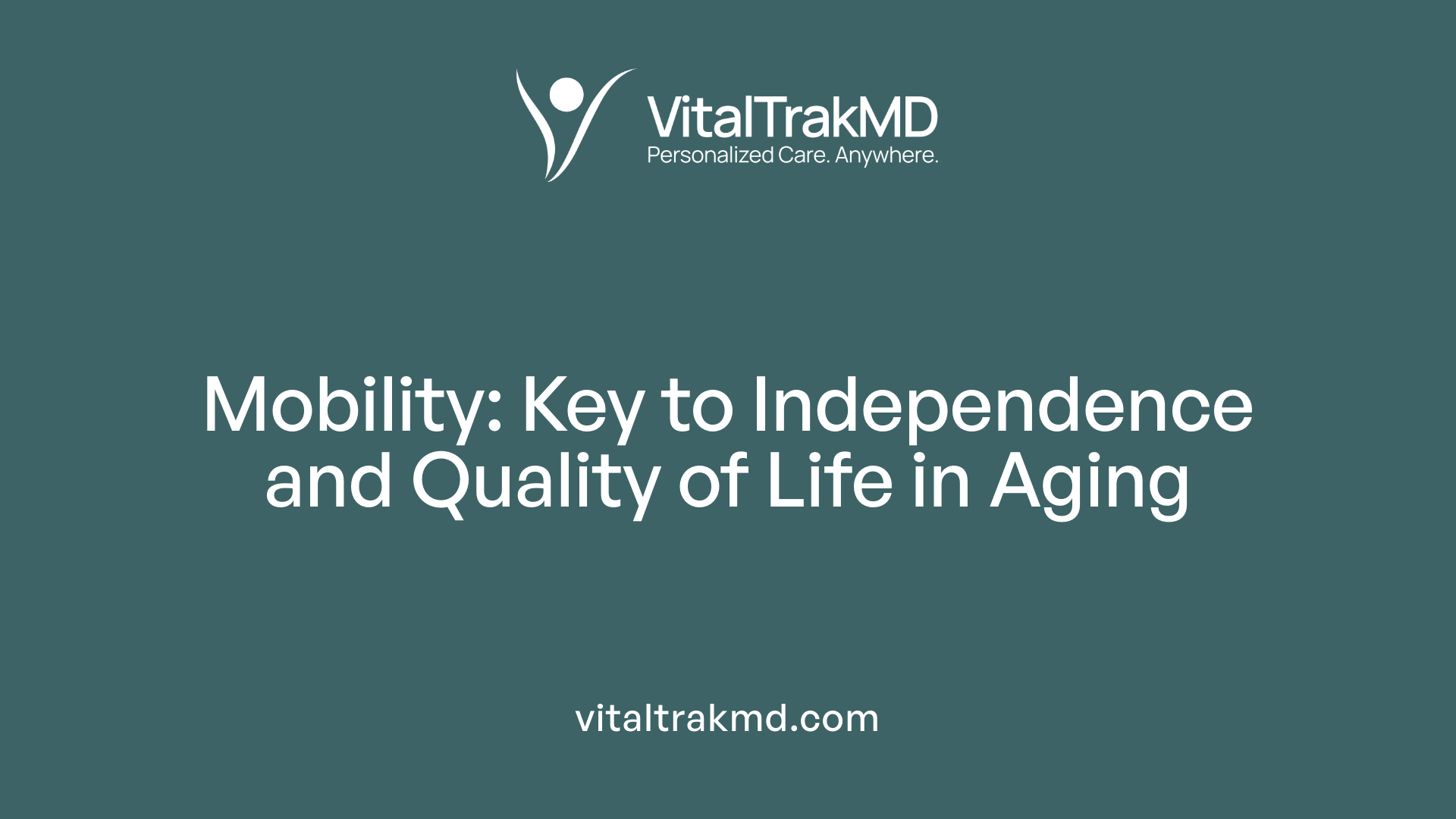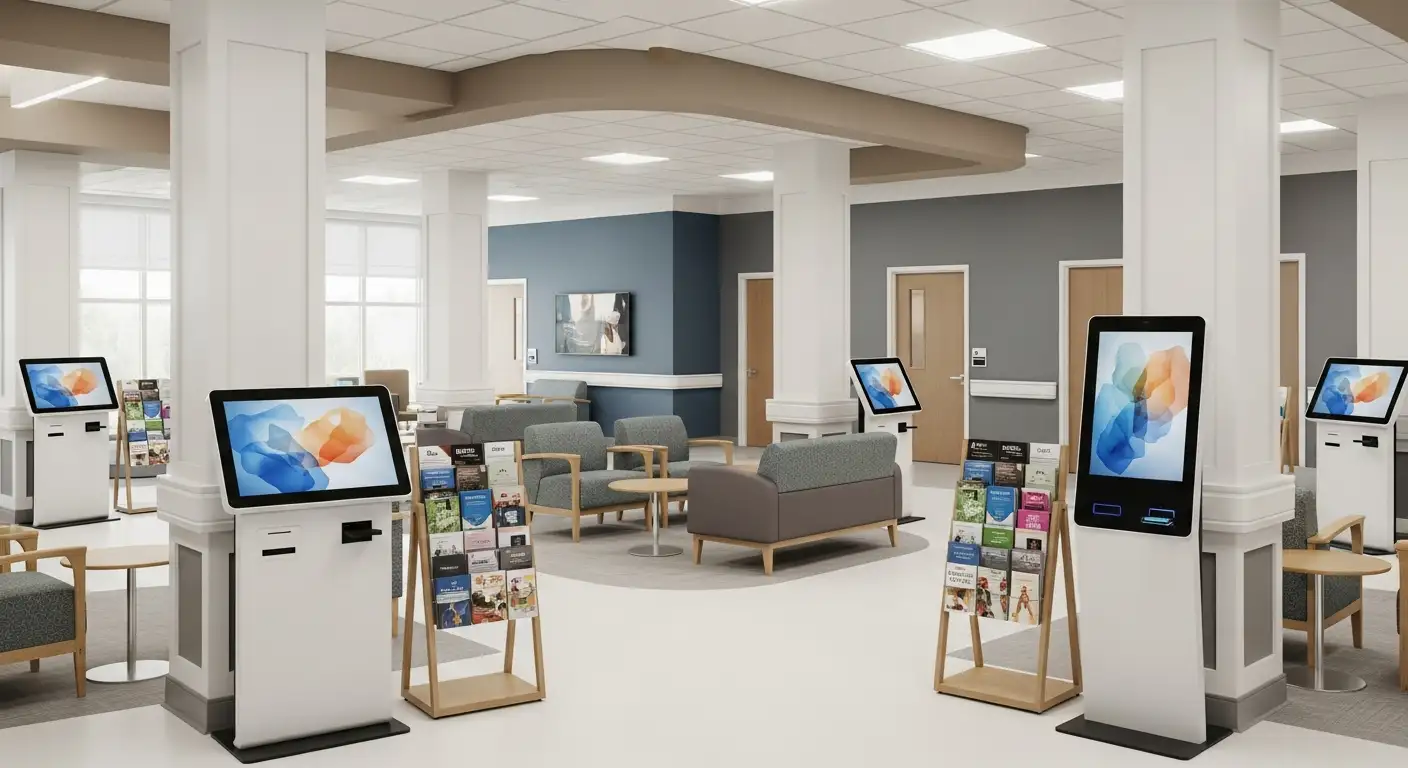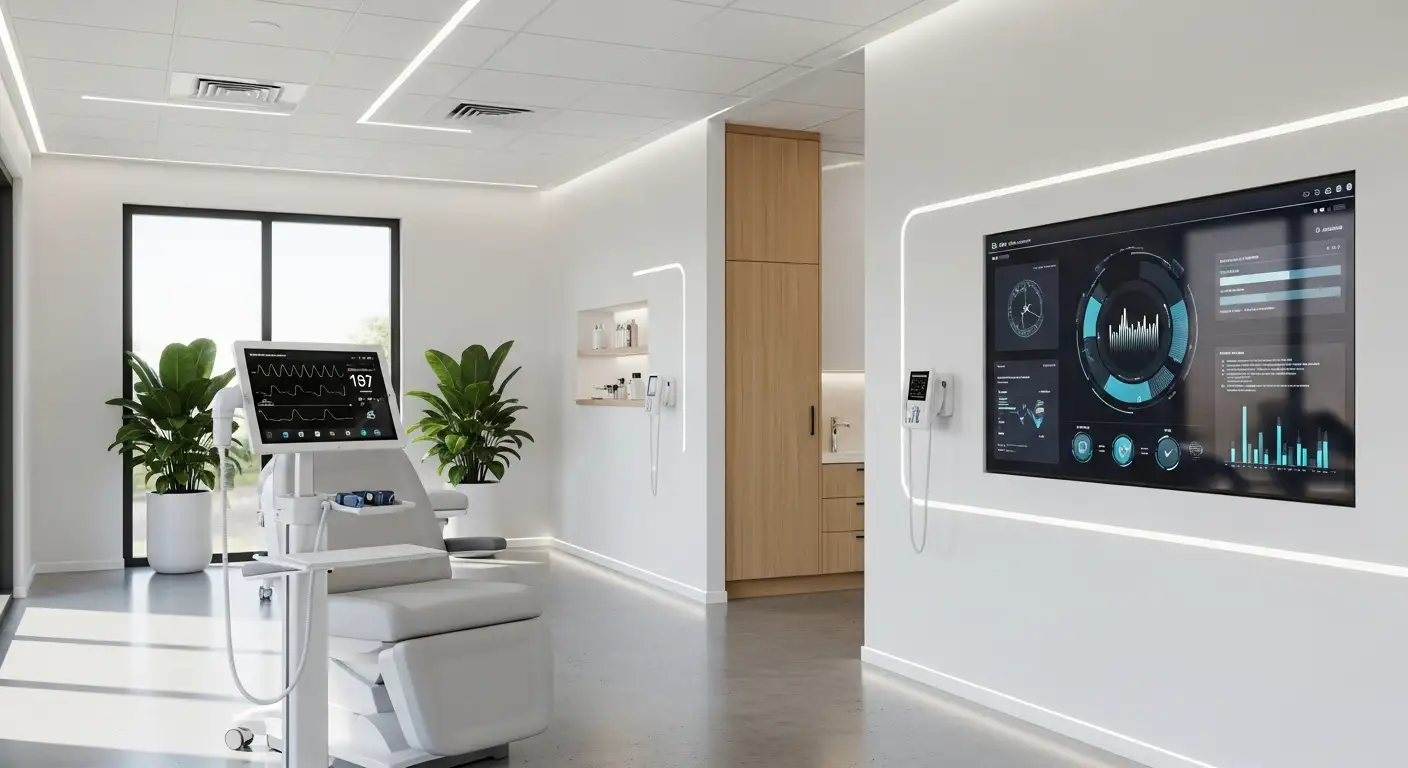The Role of Mobility Exercises in Home Care

Understanding the Critical Importance of Mobility in Elderly Care
Mobility plays a vital role in the overall health, independence, and quality of life for seniors. As aging naturally leads to declines in physical function, targeted mobility exercises become crucial tools in maintaining and enhancing mobility, especially within the home care setting. Scientific evidence underscores that regular mobility training not only improves physical capabilities but also supports mental health, reduces risks associated with frailty, and promotes safe, active aging.
The Significance of Mobility in Aging and Home Care

Why is mobility important for elderly people?
Mobility plays a vital role in the well-being of older adults, enabling them to perform daily activities such as shopping, cooking, attending medical appointments, and socializing independently. When seniors maintain active movement, they foster a sense of autonomy that contributes directly to their mental and emotional health.
Maintaining mobility also helps prevent a range of health issues. Regular physical activity improves muscle strength, balance, and flexibility, reducing the likelihood of falls and injuries. Fall-related injuries are a significant concern, with over 800,000 hospitalizations annually due to fall accidents. By actively engaging in specific exercises like resistance training, balance exercises, and endurance activities, seniors can mitigate these risks.
Home-based exercises such as chair routines, walking, or simple stretching can be particularly effective, especially when supported by technology or community programs. Incorporating mobility aids like walkers or canes, and modifying the home environment to eliminate hazards, further enhances safety and independence.
In addition to physical health, mobility supports emotional and social well-being. Being able to move freely allows older adults to engage in social activities, reducing feelings of loneliness and depression. Physical activity triggers endorphin release, which lifts mood and alleviates symptoms of depression.
Overall, promoting mobility in seniors is a cornerstone of healthy aging. It preserves their ability to live independently, enhances quality of life, and reduces the burden on healthcare systems by preventing chronic conditions and injury.
The Effectiveness and Safety of Mobility Training

What are the benefits of mobility exercises for seniors and frail individuals?
Mobility exercises offer numerous advantages for older adults, especially those considered frail. These activities help improve flexibility, joint range of motion, and muscle strength, which are vital for maintaining independence in daily tasks. Enhanced mobility reduces the risk of falls and injuries by strengthening balance and control.
Regular mobility training also supports better posture and alleviates stiffness and soreness, contributing to overall comfort and joint health. These exercises not only help tissues stay elastic and pliable but also boost confidence in movement, which encourages seniors to stay active.
Furthermore, engaging in mobility exercises supports mental well-being and cognitive health, aiding in recovery from physical exertion, and helps manage chronic conditions more effectively. Together, these benefits make mobility exercises a crucial component of healthy aging, promoting safety, activity, and independence.
Are mobility exercises safe and effective for seniors?
When tailored appropriately and performed with guidance, mobility exercises are safe for most seniors. Evidence from multiple studies supports their effectiveness in improving mobility and physical functioning among older adults.
Research indicates that mobility training can lead to clinically significant improvements, such as an average increase of 1 point on the Short Physical Performance Battery (scale 0-12), which measures mobility levels. Additionally, improvements in overall functioning, quantified by an average increase of 8.58 points on the Barthel Index (scale 0-100), suggest that seniors are gaining better control over daily activities.
The safety profile of these exercises is favorable when individual abilities and limitations are considered. Exercises like chair routines, balance practices, and stretching can be easily adapted and performed at home or in community settings. Supervision or advice from healthcare professionals can further minimize risks.
While current evidence indicates positive health impacts, the direct effect of mobility exercises on reducing falls, hospitalizations, or mortality remains uncertain due to limited data and low certainty of evidence in some areas. Nonetheless, the overall health benefits, including improved cardiovascular health, reduced joint pain, and better mental health, support their role in seniors’ routines.
How long do the benefits of mobility training last?
Research shows that the positive effects of mobility training are maintained for at least six months after completing the intervention. This suggests that engaging in regular mobility exercises can establish lasting improvements in mobility and overall functioning.
To sustain these benefits, ongoing participation in physical activity is recommended. Continuous movement and mobility exercises can help preserve muscle strength, flexibility, and balance, further preventing decline with aging.
What are the risks and adverse events associated with exercises?
Despite the general safety of mobility exercises, there are some considerations to prevent adverse events. Most issues are minor and related to overexertion, improper technique, or attempting exercises without adequate preparation.
Studies indicate that mobility training may be associated with fewer adverse events compared to control groups, but the certainty of this evidence is very low. Common concerns include muscle soreness or joint discomfort, which can often be mitigated by proper warm-up routines, gradual progression, and listening to one’s body.
In some cases, seniors with comorbidities or mobility impairments might be at increased risk if exercises are too vigorous or not properly modified. Therefore, individualized plans and professional oversight are advisable.
Incorporating safety measures, such as using support aids, performing exercises on stable surfaces, and avoiding exercises that provoke pain, can help maximize benefits while minimizing risk.
| Aspect | Details | Additional Notes |
|---|---|---|
| Effectiveness | Significant improvement in mobility scores; functions maintained over six months | Based on high-certainty evidence |
| Safety | Generally safe when properly adapted; fewer adverse events observed, but evidence certainty is low | Supervision recommended for best results |
| Risks | Minor soreness, potential for overexertion with improper technique; reduced with warm-up and gradual progression | Individual assessment essential |
| Impact on fall reduction | Evidence is inconclusive regarding significant impact on fall prevention | Exercise safety and supervision are crucial |
Creating a safe, supportive environment and customizing exercises based on individual capabilities can significantly enhance the benefits of mobility training while minimizing risks. Healthcare professionals and caregivers play vital roles in guiding and encouraging seniors to stay active safely.
Types and Methods of Mobility Exercises for Home Settings

What types of mobility exercises are suitable for home care?
For seniors practicing mobility exercises at home, a variety of gentle and accessible activities can greatly improve flexibility, balance, and strength. Stretching routines that target areas like the neck, shoulders, hips, and hamstrings can be performed seated or lying down, helping reduce stiffness and enhance joint movement.
Balance exercises such as heel-to-toe walking, standing on one leg, or using wobble boards help improve stability and lower the risk of falls. Incorporating light walking or slow-paced exercises like ankle circles maintains overall mobility and flexibility in daily life.
Strengthening activities, including resistance band exercises, chair squats, wall push-ups, and leg lifts, support muscle development and joint health. It is crucial to carry out these activities regularly, adapt them to individual comfort and capacity, and consult healthcare providers to ensure exercises are safe.
Doing a mix of stretching, balance, and strengthening exercises creates a comprehensive routine that promotes mobility while reducing injury risk or strain.
Are mobility exercises safe and effective for seniors?
When appropriately tailored to individual health status and performed with supervision, mobility exercises are generally safe and highly beneficial for seniors. Scientific evidence indicates that such training improves physical function, helping older adults maintain independence and manage frailty.
These exercises can address common issues like stiffness, muscle weakness, and back pain caused by inflexibility and prolonged inactivity. Although data on their effect on falls or hospitalization rates is limited or uncertain, overall health advantages such as enhanced circulation, pain alleviation, and mood improvement support their use.
Incorporating mobility exercises into daily routines, with proper modifications and medical guidance, enhances safety and maximizes benefits, promoting healthier, more active aging.
Use of Aids and Adaptive Equipment
Mobility aids such as walkers, canes, and wheelchairs—correctly fitted—are essential for safe movement and independence among seniors with mobility challenges. These tools provide stability, reduce fall risk, and enable participation in daily activities.
Additional adaptive equipment can include grab bars, raised toilet seats, extended handle sponges, and button hooks. These modifications assist with tasks like getting in and out of chairs, standing up from a seated position, or reaching items, thus supporting self-sufficiency.
Home modifications like ramps, removing loose rugs, and enhancing lighting further create safer environments conducive to maintaining mobility. Caregivers and family members play a vital role in selecting appropriate aids, encouraging their use, and ensuring proper fitting and training for safe and effective use.
Guidelines for safe exercise practices
Ensuring safety during mobility exercises involves several key considerations. Warm-up routines, like shoulder circles or gentle knee lifts, prepare muscles and reduce injury risk.
Starting slowly, with short sessions of 5-10 minutes, and gradually increasing duration and intensity helps prevent overexertion. Exercising on stable surfaces, using support when needed, and avoiding painful movements are important precautions.
Environmental safety measures include removing tripping hazards, ensuring good lighting, and using chairs or walls for balance support.
Hydration and appropriate clothing—including supportive footwear—are vital for comfort and safety.
Monitoring for any discomfort, dizziness, or pain, and stopping activity if symptoms arise, safeguards health.
Consulting healthcare professionals before beginning any new exercise program ensures that routines are suitable for individual health conditions, making home mobility exercises both safe and effective for seniors.
Supporting Elderly Mobility Through Care Strategies and Environment Optimization

How can mobility exercises benefit overall health and prevent falls in older adults?
Mobility exercises play a vital role in promoting overall health among older adults. These activities enhance flexibility, balance, and muscle strength, all of which are essential for maintaining independence and reducing the risk of falls. Simple routines like neck stretches, shoulder circles, and ankle rotations help improve joint mobility and decrease stiffness, making daily movements safer.
Balance exercises such as standing on one foot or heel-to-toe walking are particularly beneficial in preventing falls by strengthening stabilizing muscles. Incorporating muscle-strengthening activities like chair squats, bridges, and wall push-ups supports bone health and stability, further reducing injury risk.
Regular mobility routines not only foster physical resilience but also support mental well-being by encouraging activity and self-confidence. Consistently practicing these exercises is a proven method to promote healthier aging, prevent injuries, and sustain an active, independent lifestyle.
What role do caregivers and home modifications play in supporting mobility?
Caregivers are central to supporting the mobility of older adults, particularly those with frailty or physical limitations. They encourage regular movement and assist with specific exercises tailored to individual needs. Ensuring safety at home is also crucial, which involves removing hazards such as loose rugs, clutter, and poor lighting that could cause falls.
The use of mobility aids like walkers, canes, and correctly fitted wheelchairs significantly enhances stability and ease of movement. Home modifications further improve safety and independence. Installing grab bars in bathrooms, ramps at entrances, and non-slip mats in key areas creates a safer environment that minimizes fall risks.
Educating family members and caregivers on proper support techniques, such as safe lifting and transferring methods, preserves dignity and prevents injury. This collaborative effort between caregivers and environmental adjustments helps seniors retain their mobility, internalize independence, and avoid preventable accidents.
Additional Support Features and Resources
To further aid elderly mobility, communities offer various resources including senior exercise classes, physical therapy programs, and walking groups. These social activities promote motivation, engagement, and health.
Adaptive equipment like grab bars, raised toilet seats, and remote-controlled devices also facilitate easier daily activities. Home modifications—such as installing ramps, improving lighting, and removing tripping hazards—are essential for creating accessible, safe spaces.
Engagement from caregivers and support systems, along with suitable physical environment adjustments, greatly influences the ability of older adults to stay mobile, active, and independent. This combination of personal and environmental support forms a comprehensive approach to healthy aging.
| Aspect | Description | Additional Details |
|---|---|---|
| Exercises | Mobility, balance, strength, flexibility activities | Examples include neck stretches, heel-to-toe walking, chair squats |
| Caregiver Role | Promote activity, assist with exercises, ensure home safety | Proper lifting, encouragement, emotional support |
| Home Modifications | Structural adjustments for safety and accessibility | Install grab bars, ramps, improve lighting |
| Support Resources | Community programs, adaptive equipment, safety guidelines | Senior classes, therapy, mobility aids |
This integrated approach ensures that seniors can maintain their mobility effectively, live independently, and enjoy a better quality of life.
The Broader Impact of Mobility in Aging: Psychological and Social Dimensions

How do mobility exercises impact mental health and pain management?
Mobility exercises play a significant role in enhancing mental health among seniors. Engaging in regular movement helps reduce feelings of depression and anxiety by releasing endorphins, which are natural mood lifters. These activities foster a sense of independence and boost confidence, empowering older adults to perform daily tasks with greater ease, thereby improving overall well-being.
Additionally, mobility training contributes to pain relief. Improved flexibility, muscle strength, and joint support from activities like stretching, yoga, walking, or water aerobics can alleviate chronic pain and discomfort. Consistent movement helps prevent stiffness and reduces the risk of injury, which are common issues in aging populations.
Mental health benefits extend beyond pain management. Regular mobility exercises support cognitive functions such as memory and attention, possibly lowering the risk of dementia. They also promote better sleep patterns, which further benefits emotional health.
A vital aspect of mental well-being linked to mobility is the opportunity for social interaction. Participating in group exercises or community classes enhances social engagement, combating loneliness and social isolation. This social involvement is crucial, as it has been shown to positively impact emotional resilience and lower depression rates.
The combination of physical activity and social interaction creates a holistic approach to aging well. Incorporating simple mobility routines—like stretching, seated exercises, or walking—into daily life supports both physical and mental health, enabling older adults to maintain independence and enjoy a more active, fulfilling lifestyle.
Overall, mobility exercises are a cornerstone of holistic health for seniors, offering tangible benefits not only for physical function but also for emotional resilience and social connectedness.
Promoting Mobility for a Better Aging Experience
Supporting elderly individuals through targeted mobility exercises, caregiver involvement, and conducive home environments is essential for fostering independence, preventing falls, and enhancing overall health. Evidence demonstrates that mobility training leads to meaningful improvements in physical functioning and quality of life for seniors. By integrating safe, effective exercises into daily routines, caregivers and older adults can work together to maintain mobility, combat frailty, and promote a vibrant, active aging process. Education, community resources, and home modifications further empower seniors to stay engaged, safe, and independent in their own homes, ultimately enriching their well-being.
References
- Mobility training for increasing mobility and functioning in older ...
- Why Senior Mobility Is so Important Right Now
- Five Mobility Exercises for Seniors in Home Care
- The Importance of Mobility - Comfort Keepers
- The Importance of Protecting Your Mobility - Generations Home Care
- Tips & Exercises for Improving Senior Mobility - Caring Senior Service
- Mobility training for increasing mobility and functioning in older ...
- The Vital Importance of Movement in Nursing Home Care
- Staying Active and Independent: The Importance of Mobility ... - Acorn
Recent articles
Want to Feel Better and Live Healthier?
Join hundreds of patients taking control of their health with personalized care that fits their life – not the other way around.
Rated 4.8/5 by 32+ customers







